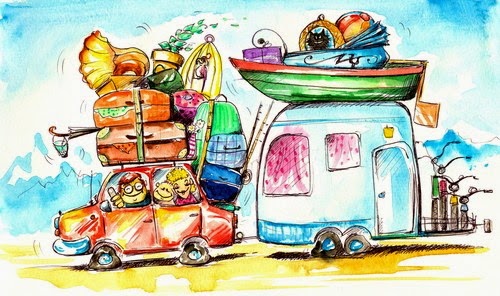Náttúrufar
Introduction.
Hrútafjörður enters the Húnaflói to the south and is approximately 36 miles long. He is considered one of the longest fjords in Iceland. He enters between Guðlaug Appeal and pitch Local Ness and 6-7 miles wide at the mouth (previously recommended weekly sea), but tapers rapidly within the draws. The fjord is about 70-80 meters deep distal than around 30 meters within the. The route into the fjord is narrow and not a direct result of sand and review the cut and not trouble for strangers to enter the table ear. To illustrate this monopoly merchants refused to fly there, wore a dirty ship way into Hrutafjörðr, along íshættu.
Based on the west coast called Bæjarhreppur is the southernmost municipality of witchcraft. The eastern side of the fjord formerly Staðarhreppur, but is now part of the municipality HÚNAÞING.
Goals coastal Húnaþings west and thereby also limit Centre and North are from the bottom of the river Ramfirth with a Holtavörðuheiði.
Formations.
Fjords are practically one continuous basalt area. The same is true Strandasýsla (including Hrutafjörðr). Rock where is mainly basalt. Layers of rock slopes mostly southeast of 3-6 degrees. Earth History tells us that the basalt formation has occurred in the Tertiary-period; for 3.3 to 8.5 million years ago. Tertiary-period is considered to have been warmer than now, no ice and more forests. Granite formation Iceland is largely from lava layers. Most eruptions have occurred in volcanic fissures, cone or chamber. Occasional eruptions Rarely seen now, why is gígveggirnir have often become blurred before next hraunlag lay above. Tertiary Volcanic Tableland has largely built up from lava or flow eruptions. The lava improve the catch anything about ancient "eldkeilur" or sk side of the volcano, which are hidden under lava law. There are a total of 50 known of volcanoes that have been active in Iceland. In Hrútafjörður is known from Tertiary volcanic-period.
Volcanoes of this type is similar to the volcanoes as Krafla caldera or the development and implementation. They have their beginning, aging and mature and form a conical volcano that rises about 1000 m above its surroundings. When towards the end of the second half of their lifetime become a major eruption which emptied partly or mostly magma beneath them. Their center falls down and caldera formed. Volcanic material in this cycle are mostly rhyolite. The box is typically about 10 km in diameter, and may be 500-1000 m deep. The carton is usually a time lake, similar basin today. Volcanic eruptions are in the water and formed the tuff but not lava. However, lava flow into the box, often down steep scree slopes. Over time, the volcanic material to reach brim box and volcano tries gradually the younger lava. (Haukur Johannesson, 1997).
Geothermal energy is in two locations (that is known) on the edge of the ancient volcanoes, Reykir fjord east and west of the town Laugarholt.
Soil.
Most Wetlands soil Hrútafjörður as is common in basalt areas. It relates to groundwater and it again porosity of the country. Berg did, ie blágrýtið is dense and groundwater higher than in most of móbergs- lava areas where terrestrial soils are common due to the surface penetrates the barrier low down. The air temperature is not high in Hrútafjörður (rather than in the entire country) and chemical weathering slow. For this reason, reluctantly released un nutrient salts from bergmylsnunni, it can be traced phosphorus card Icelandic soil this. Farmers carry phosphorus grassland in spring in the form of fertilizers to meet this shortage.
Appearance country.
Appearance landscapes Hrútafjörður both sides of the fjord are low mountains, or rather sloping, grassy ridge. The height is widespread in over 300 m.y.s. Rocky edges are barely see. Several shallow valleys are up from the beach and was previously based in most of them. Peter Jonsson from jumping describes the country (in Hrútafjörður) thus Strand Mann book: "In the summer the land this very expressive hýrt and smiling, but not at the same time much expressive and captivating"
Is certain that the country is substantial vegetation and well suited to sheep farming is widespread in thought better of the country. Moorland and grassland (farmland) along almost all the fjord and from that takes most of the wetlands. Moss Flora is a small scale in this area. Beating Countries are not high and preferably krækiber what it is. Forests are none but trjárækt slightly practiced, perhaps try the willow species in the form of shelterbelts more than others cultivation.
Wildlife.
Most donated. farm animals, if not all found in Hrútafjörður, in varying degrees, (sheep is the most practiced, there a national platforms). Birdlife must be considered rather diverse, both land and sea birds, but the type of the eye equivalent to what most eider. Seals often overlook the cut. Seal hunting was long practiced from several towns in Hrútafjörður. A significant example, small cetaceans prying into all bays, it is preferably in still air. Then heard wheezing from them even home town. Mink and delays do occur each year and conducts hunting for them, sponsored by state and local authorities.
Climate.
Probably will be considered but breezy in Hrútafjörður, though no byljaveður, because the mountains are low and form no edges. North wind is köldust the wind is from the sea, to the south direction what hlýjust (warming on his journey across the country). This is not a snowy area and drizzly far fewer than the south, where it is compared. Temperature is everywhere visible effect on the temperature, the temperature difference is greater the farther sea. Sea attracts most of the summer heat and winter makes milder and even air temperature throughout the year. It applies Hrutafjörðr.




Comments
Post a Comment